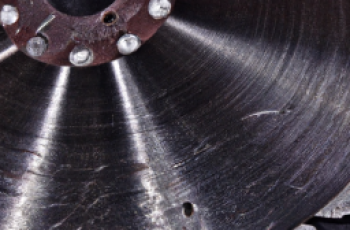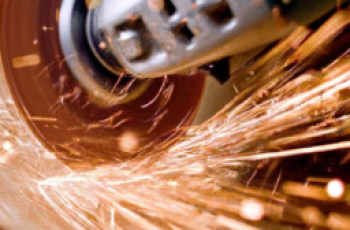If you’re in the mood for some DIY home improvement projects or need to make precise cuts in metal materials, then using an angle grinder can be a handy tool to have in your arsenal. An angle grinder is a versatile power tool that can be used for a variety of tasks, but in this article, we’ll focus on its application for metal cutting. Whether you’re a seasoned DIY enthusiast or just starting out, this article will provide you with all the information you need to safely and effectively use an angle grinder for metal cutting. From choosing the right blade to following safety measures, we’ve got you covered. So, let’s get started and make those metal cutting tasks a breeze!
Safety Precautions
When using an angle grinder for metal cutting, it is important to prioritize safety. By following these safety precautions, you can ensure a safe and accident-free work environment.
Wear appropriate personal protective equipment
Before starting any metal cutting task, make sure you are properly dressed in the necessary personal protective equipment (PPE). This includes safety glasses or a face shield to protect your eyes from any debris or sparks, as well as ear protection to guard against the noise generated by the grinder. Additionally, wearing gloves and a long-sleeved shirt can protect your hands and arms from any accidental slips or contact with the grinder.
Ensure a well-ventilated work area
Working in a well-ventilated area is crucial when using an angle grinder for metal cutting. The process can produce dust and fumes, which can be harmful if inhaled. Make sure you are in a space with good airflow, either by opening windows or setting up fans to circulate the air. If working indoors, consider using a dust extraction system or wearing a respirator to further protect yourself from any potential airborne particles.
Secure the workpiece properly
Before starting to cut, it is essential to secure the workpiece firmly in place. This can be achieved by using clamps or a vice to ensure it does not move during the cutting process. A loose or unstable workpiece can lead to accidents or injuries. Take the time to position the workpiece securely before proceeding.
Inspect the grinder for faults or damage
Before using an angle grinder for metal cutting, examine it carefully for any faults or damage. Check that all the parts are intact and in good working condition. Ensure that the power cord is not frayed or damaged, and that the safety features, such as the switch and guard, are functioning properly. If you notice any issues or concerns, do not use the grinder and have it repaired or replaced immediately.
Choosing the Right Angle Grinder
To achieve successful metal cutting with an angle grinder, it is crucial to select the right tool for the job. Consider the following factors when choosing your angle grinder.
Consider the power source
Angle grinders can be powered by electricity, batteries, or compressed air. When choosing, consider the availability of power sources in your work area and the level of portability required. Electric grinders provide a continuous power supply, while battery-powered ones offer greater mobility. Compressed air grinders are ideal for environments without electricity but may lack the same power as electric counterparts.
Select the appropriate disc size
The disc size of an angle grinder determines its cutting depth and overall performance. Smaller discs, typically ranging from 4 to 7 inches in diameter, are suitable for light and moderate cutting tasks. For heavy-duty cutting or larger workpieces, opt for larger discs with diameters of 9 inches or more. Consider the scale of your metal cutting projects when deciding on the ideal disc size.
Check the RPM rating
The revolutions per minute (RPM) rating of an angle grinder indicates its speed. Higher RPM allows for faster and more efficient cutting. However, the higher the RPM, the greater the risk of accidents or injuries. Select an angle grinder with a suitable RPM rating for your specific cutting needs. Keep in mind that smaller discs require higher RPMs, while larger discs operate at lower speeds.
Evaluate additional features
Some angle grinders come with additional features that enhance their versatility and ease of use. Look for features such as adjustable handles for improved control and comfort, spindle locks for easy disc changes, and adjustable guard positions to accommodate different cutting angles. Assess your requirements and choose an angle grinder with the features that best meet your needs.
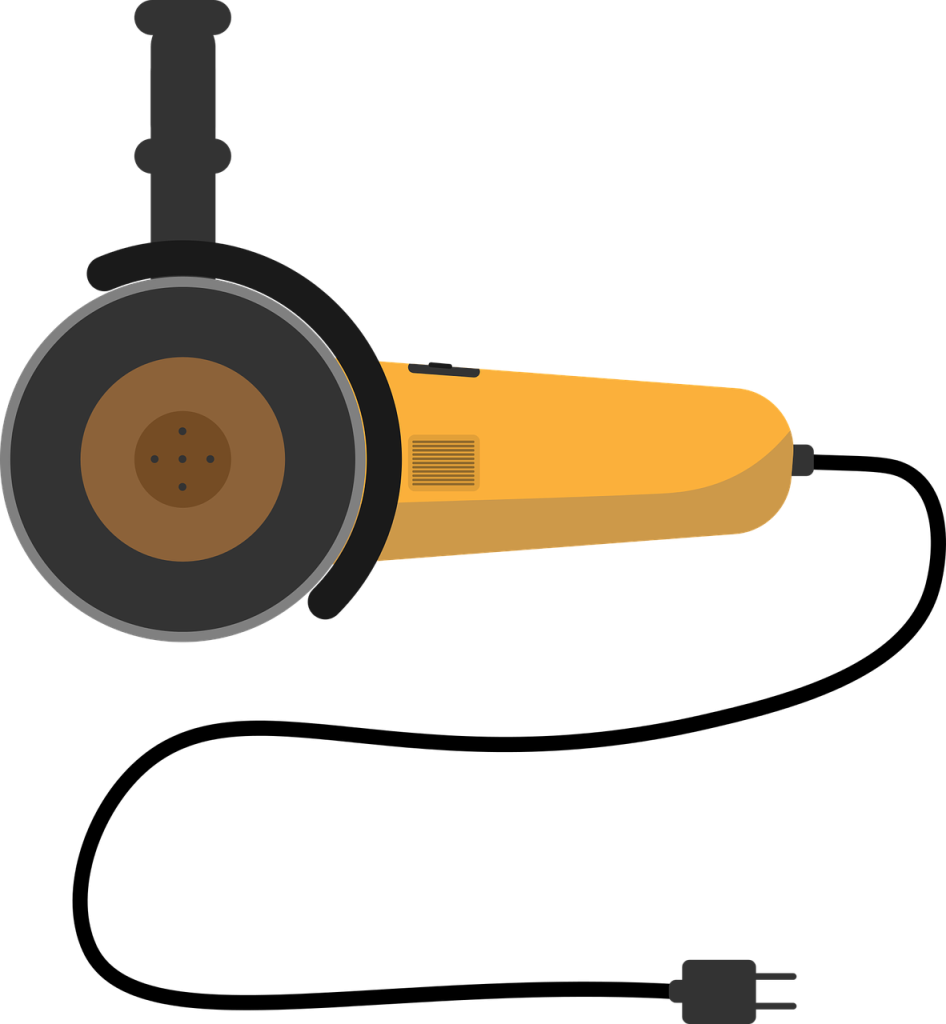
Selecting the Correct Disc
Choosing the correct disc for metal cutting is essential to achieve precise and efficient results. Consider the following factors when selecting the right disc for your angle grinder.
Differentiate between grinding and cutting discs
Angle grinders use different types of discs for grinding and cutting tasks. It is crucial to understand the difference between the two to ensure you select the appropriate disc for metal cutting. Grinding discs are designed for removing material, smoothing surfaces, or sharpening tools. Cutting discs, on the other hand, are specifically made for cutting through metal and should be used for metal cutting tasks.
Choose the right disc composition
Discs for metal cutting are available in various compositions, each suitable for different types of metals. Aluminum oxide discs are the most commonly used and are suitable for cutting steel and other ferrous metals. If working with stainless steel or other non-ferrous metals, opt for a disc with zirconia alumina or silicon carbide composition. Consider the type of metal you will be cutting and choose a disc accordingly to achieve optimal results.
Select the appropriate disc thickness
The thickness of the cutting disc also plays a crucial role in metal cutting. Thicker discs provide more stability and durability, making them suitable for heavy-duty cutting tasks. Thinner discs, on the other hand, offer higher precision and are ideal for cutting thinner metal sheets or objects. Select a disc thickness that matches the thickness of the metal you are cutting while ensuring it is compatible with your angle grinder.
Preparing for Cutting
Proper preparation is key to ensuring a successful metal cutting process. Follow these steps to prepare for cutting with an angle grinder.
Mark the cutting line
Before starting to cut, mark the desired cutting line on the metal surface. Use a measuring tool or a straight edge to ensure accuracy. Properly marking the cutting line will guide your cutting process and help you achieve the desired shape or size.
Secure the workpiece to prevent movement
To prevent any movement or shifting of the workpiece during cutting, securely clamp it to a workbench or use a vice. This will ensure stability and accuracy during the cutting process, minimizing the risk of accidents or mistakes. Check that the workpiece is firmly held in place before proceeding.
Clear the area of any flammable or hazardous materials
Before you begin cutting, clear the surrounding area of any flammable or hazardous materials. Sparks or debris can ignite or cause harm if they come into contact with flammable substances or dangerous chemicals. Remove any potential risks and create a safe working environment to focus on the metal cutting task at hand.
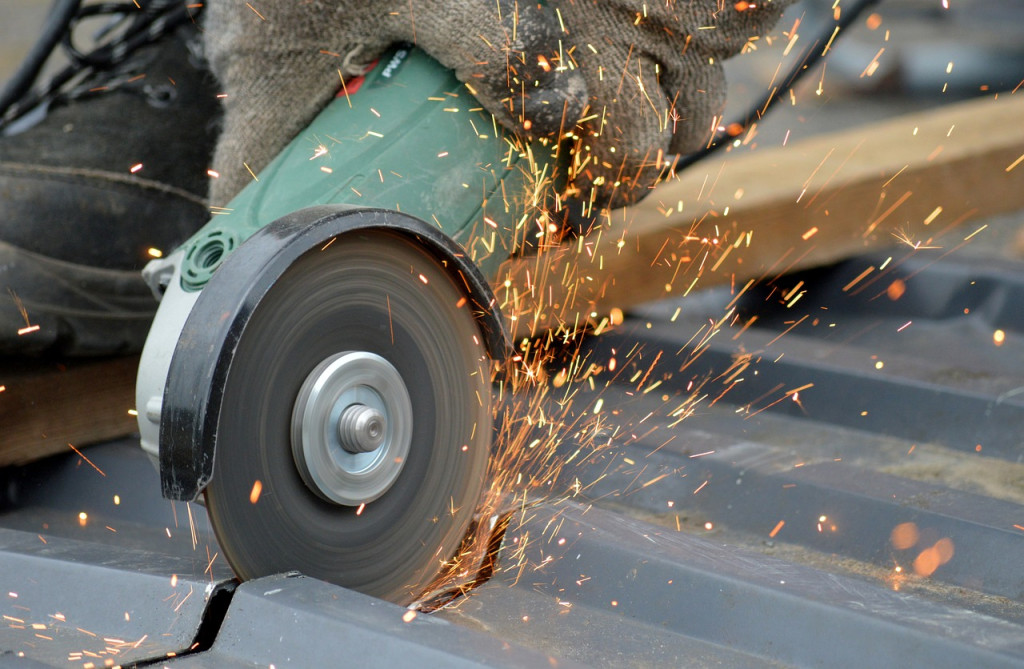
Cutting Techniques
Mastering proper cutting techniques is essential for achieving accurate and efficient metal cutting results. Follow these guidelines for using an angle grinder to cut metal effectively.
Hold the angle grinder with a firm grip
When operating the angle grinder, ensure you have a firm grip on the tool. Use both hands to maintain control and stability throughout the cutting process. This will help you navigate the grinder smoothly and avoid any unexpected jerks or movements.
Start the grinder at a safe distance from the workpiece
Before bringing the spinning disc in contact with the metal, start the grinder at a safe distance. This allows the disc to reach its maximum speed before engaging it with the workpiece. Slowly bring the grinder closer to the cutting line once the disc is at full speed.
Apply consistent and even pressure
Ensure you apply consistent and even pressure while cutting through the metal. Applying too much pressure can cause the disc to bind or stall, while too little pressure may result in a slow and inefficient cut. Find the right balance and maintain a steady cutting pace.
Use a steady cutting motion
To achieve a smooth and accurate cut, use a steady cutting motion. Move the grinder along the marked cutting line in a controlled manner. Avoid sudden or jerky movements that can compromise the precision and quality of the cut.
Allow the grinder to do the work
Let the angle grinder do the work when cutting through metal. Excessive force or pushing can lead to overheating, premature disc wear, or even disc disintegration. Instead, guide the grinder along the cutting line while allowing its powerful motor and sharp disc to effortlessly cut through the metal.
Avoiding Common Mistakes
To ensure a safe and efficient metal cutting process with an angle grinder, avoid these common mistakes.
Do not force the grinder through the metal
Forcing the grinder through the metal can lead to overheating, disc wear, and potential accidents. Allow the grinder’s sharp disc to cut through the metal effortlessly, using proper cutting techniques and appropriate disc selection.
Avoid excessive heat buildup
Excessive heat buildup can occur if the cutting process is prolonged or if the wrong disc is chosen for the metal being cut. Overheating can cause the metal to warp or produce hazardous fumes. Take breaks during prolonged cutting, and adjust cutting speed to minimize heat buildup.
Avoid putting excessive pressure on the disc
Putting excessive pressure on the disc can cause it to bind, stall, or break, leading to potential accidents or injuries. Apply consistent and even pressure to achieve the desired cut without putting unnecessary stress on the disc.
Do not twist or angle the grinder while cutting
Twisting or angling the grinder while cutting can lead to inaccurate cuts, damage to the disc, or potential injuries. Maintain a steady and straight cutting motion along the marked cutting line.
Do not cut near flammable or dangerous materials
Cutting near flammable materials or dangerous substances can create a hazardous environment. Ensure the area is clear of any flammable or hazardous materials before starting the cutting process. Even small sparks or debris can ignite or cause harm, so take precautions to work in a safe and controlled environment.
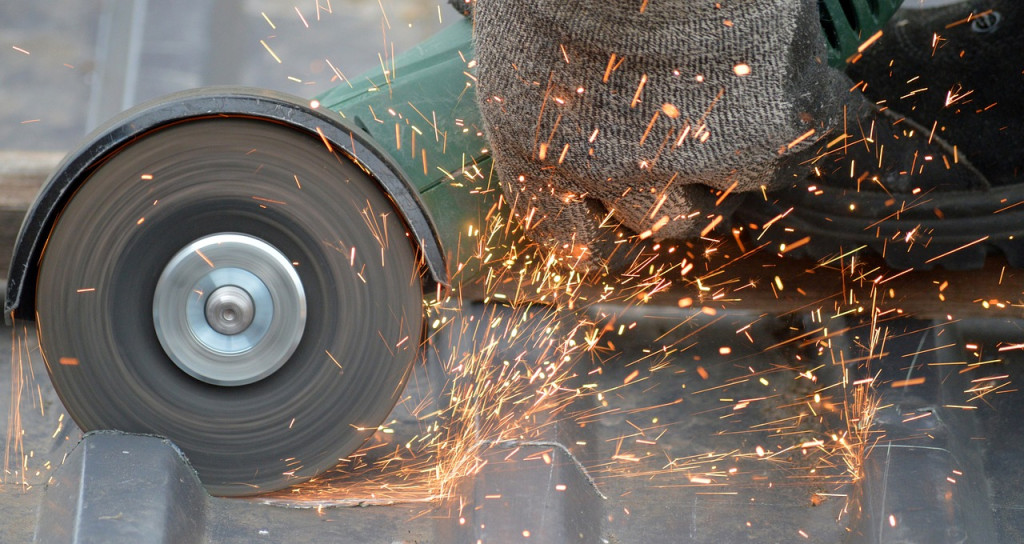
Maintaining and Cleaning the Grinder
Proper maintenance and regular cleaning of your angle grinder will help prolong its lifespan and ensure optimal performance. Follow these steps to maintain and clean your grinder effectively.
Switch off and unplug the grinder before maintenance
Before performing any maintenance or cleaning tasks, switch off the grinder and unplug it from the power source. This will prevent any accidental starts or electrical hazards while working on the tool.
Remove the disc and inspect for damage or wear
Once the grinder is powered off and unplugged, remove the cutting disc. Examine it closely for any signs of damage or significant wear. If the disc is cracked, chipped, or excessively worn, replace it with a new one to maintain safe and efficient cutting.
Clean the grinder body and accessories
Using a clean cloth or brush, wipe the grinder body to remove any accumulated dust or debris. Pay attention to the vents and crevices where particles may have settled. Clean any accessories, such as guards or handles, separately to ensure they are free from any dirt or residue.
Replace worn or damaged parts
If any parts of the grinder are worn or damaged, replace them promptly. This includes worn-out brushes, damaged cords, or malfunctioning switches. Do not continue using a grinder with compromised parts, as this can pose a safety risk.
Store the grinder in a clean and dry area
After cleaning and maintenance, store the grinder in a clean and dry area to prevent dust or moisture from affecting its performance. Keep it in a dedicated toolbox or on a secure shelf, away from any potential damage or accidental activation.
Troubleshooting
Occasionally, you may encounter issues or problems while using an angle grinder for metal cutting. Here are some common troubleshooting tips to help you overcome these challenges.
Grinder not starting or running properly
If your grinder fails to start or runs intermittently, check the power source first. Ensure that the power cord is securely plugged in and that the electrical outlet is functioning correctly. If the problem persists, consult the grinder’s user manual or contact the manufacturer for further assistance.
Disc getting stuck or not cutting effectively
If the cutting disc gets stuck or fails to cut effectively, there might be an issue with the disc’s alignment or the workpiece stability. Check that the disc is securely attached and aligned with the grinder’s spindle. Ensure that the workpiece is firmly clamped or secured to prevent any movement that may hinder the cutting process.
Excessive vibration or noise
Excessive vibration or noise during operation can indicate a problem with the grinder or disc. Inspect the grinder for any loose or damaged parts that may be causing the vibrations. If the disc is damaged or improperly installed, replace it with a new one. If the vibrations persist, consult a professional or the grinder’s manufacturer.
Overheating or disc disintegration
Overheating or disc disintegration can occur when the grinder is used incorrectly or when the wrong disc is selected for the task. Take breaks during prolonged cutting to prevent heat buildup, and adjust the cutting speed to avoid overheating. Ensure that the chosen disc is compatible with the metal being cut to minimize the risk of disc disintegration.
Alternative Cutting Methods
While angle grinders are commonly used for metal cutting, there are alternative cutting methods available for specific situations or preferences. Consider these alternative cutting methods when an angle grinder may not be the most suitable tool for your metal cutting needs.
Using a hacksaw or manual metal cutters
For smaller metal cutting tasks or situations where precision is crucial, using a hacksaw or manual metal cutters can be a suitable alternative to an angle grinder. These tools provide more control and accuracy, especially in tight spaces or when working with delicate materials.
Utilizing plasma cutters or oxy-fuel torches
Plasma cutters and oxy-fuel torches are excellent alternatives when working with thick or heavy metals. These tools utilize high heat to cut through metal effectively. However, they require specialized training and safety precautions, so ensure you are familiar with their operation and usage guidelines before attempting metal cutting.
Exploring waterjet or laser cutting technologies
Waterjet and laser cutting technologies offer precise and intricate metal cutting capabilities. These advanced methods utilize highly pressurized water or laser beams to cut through a wide range of metal materials with exceptional precision. However, they are usually reserved for industrial or commercial applications due to their complexity and cost.
Applications and Examples
Using an angle grinder for metal cutting opens up various applications and opportunities. Here are some common examples of metal cutting tasks for which an angle grinder is commonly used.
Cutting metal pipes and tubing
Angle grinders are ideal for cutting metal pipes and tubing of various sizes. Whether it is copper, steel, or other types of metal, an angle grinder with the appropriate cutting disc can make quick work of cutting pipes accurately and efficiently.
Trimming sheet metal
When precision and smooth cuts are required, an angle grinder with a cutting disc is an excellent choice for trimming sheet metal. Whether it is for fabrication projects, repairs, or DIY tasks, an angle grinder offers the versatility and power needed to achieve clean and precise cuts.
Removing excess metal from welds
After welding metal parts together, removing excess material or weld splatter may be necessary. An angle grinder equipped with a grinding disc can quickly and efficiently remove these imperfections, leaving a smooth and finished surface.
Modifying metal objects
An angle grinder allows you to modify metal objects and achieve the desired shape or size. Whether it is modifying brackets, cutting slots, or creating intricate designs, an angle grinder with the appropriate cutting disc can easily accomplish these tasks.
In conclusion, using an angle grinder for metal cutting can be a practical and efficient solution for a wide range of cutting applications. By following the safety precautions, choosing the right grinder and disc, mastering cutting techniques, and performing proper maintenance, you can achieve accurate and efficient metal cuts while ensuring a safe work environment. Always prioritize safety and take the necessary precautions to protect yourself and those around you. Happy cutting!


